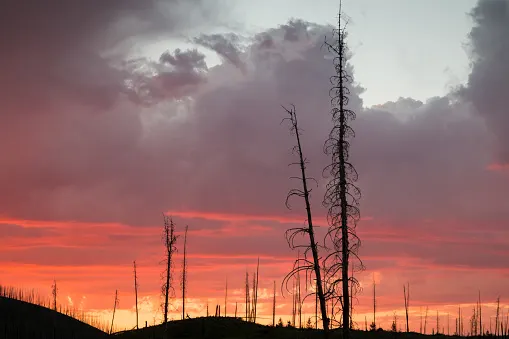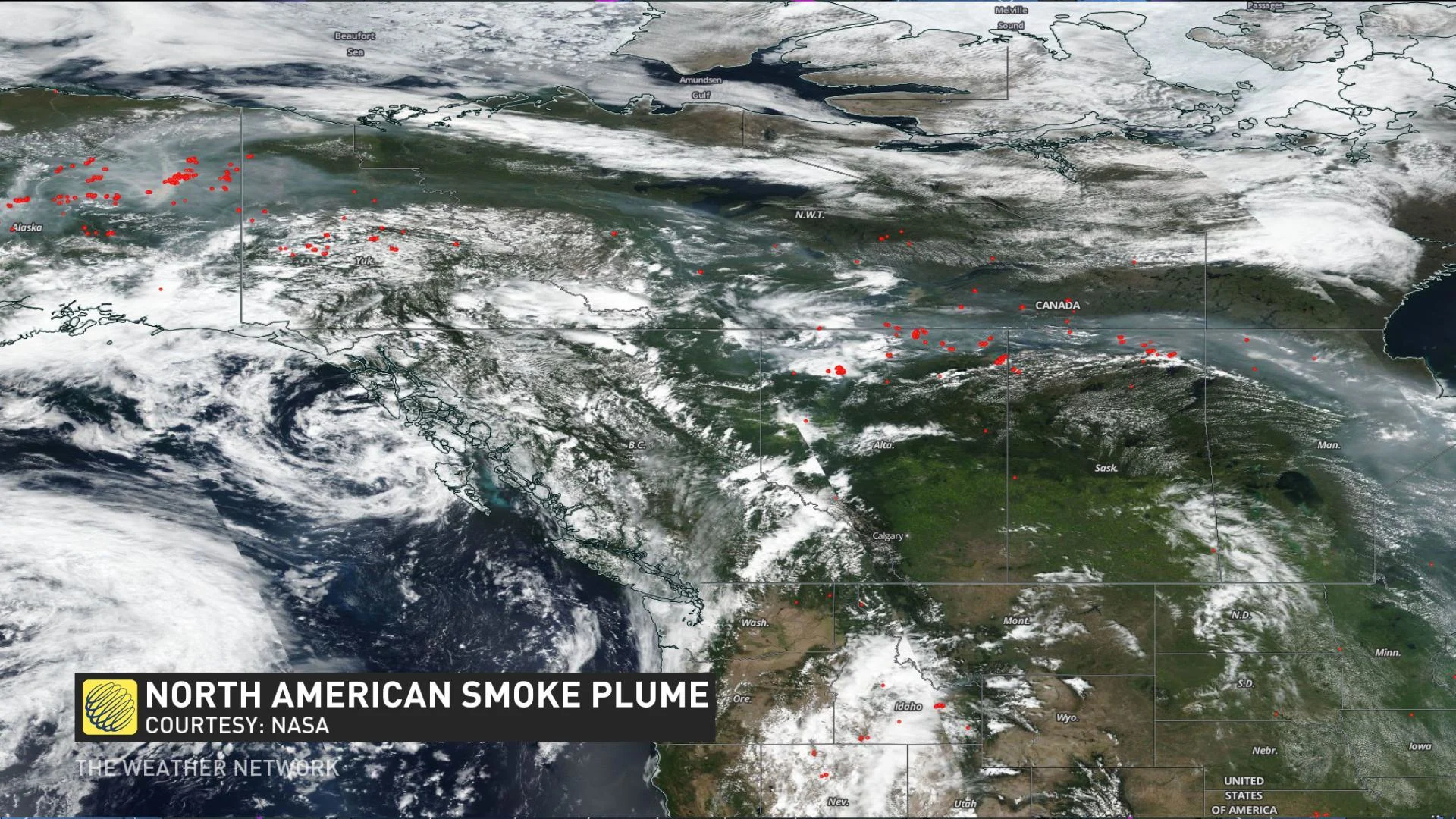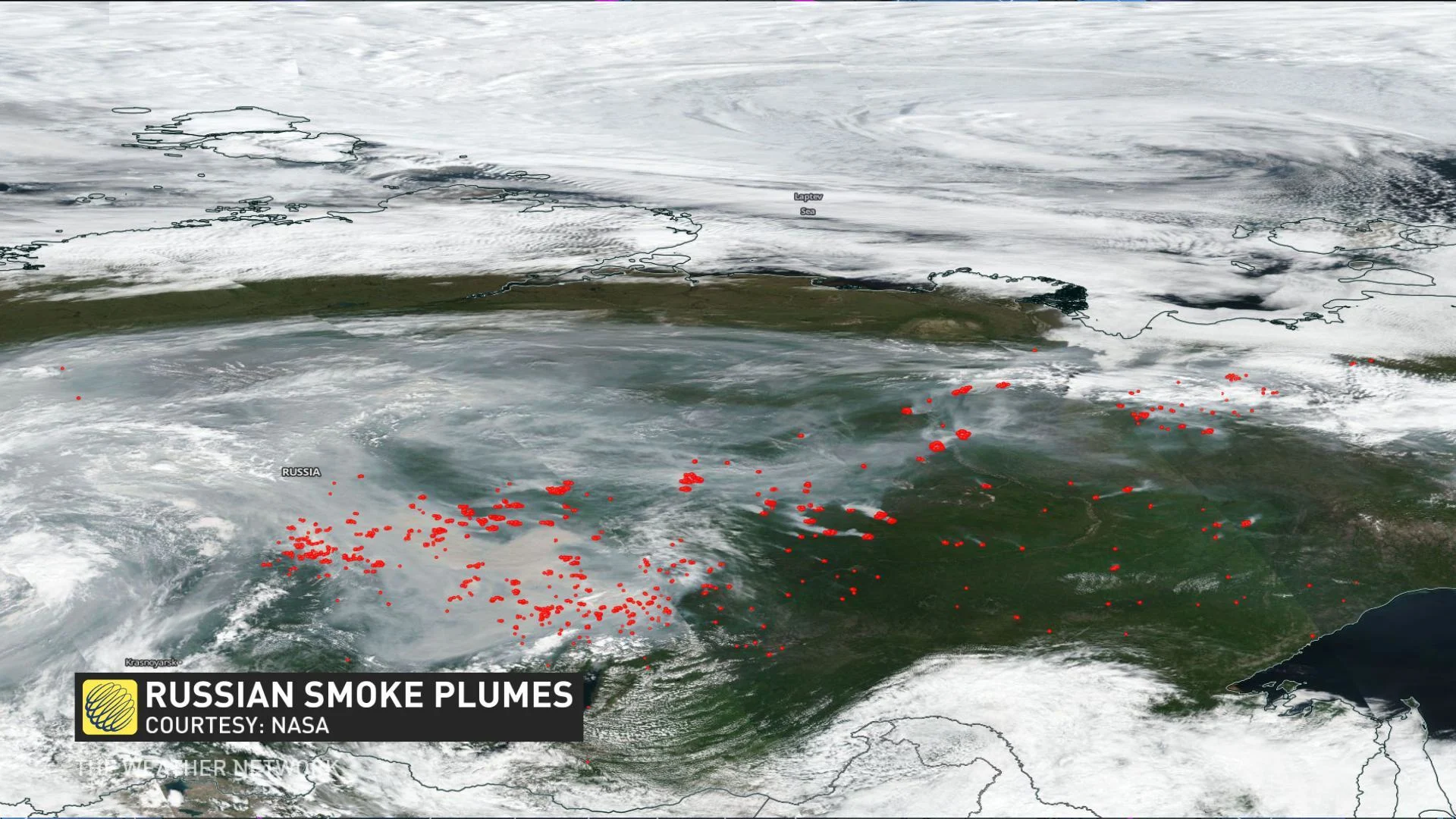
The Arctic is on fire in summer 2019
Summer and wildfires have become increasingly synonymous for many parts of Canada, but this year's fire focus has shifted further north. 2019 has already seen an unprecedented number of fires north of the Arctic Circle, both in North America and Eurasia in the wake of what was, globally, the hottest June on record, and what will likely be the hottest July.
Summer revealed! Visit our Complete Guide to Summer 2019 for an in-depth look at the Summer Forecast, tips to plan for it and much more
While wildfires in the Arctic Circle aren't unheard of, this year's fires have been unusually intense. Through June and the first half of July, the Copernicus Atmosphere Monitoring Service (CAMS), part of the European Centre for Medium-Range Weather Forecasts, has tracked more than 100 major fires north of the Arctic Circle.
The fires have been most severe in Alaska and Siberia, though other high-latitude fires across northern Canada have also been noteworthy. One near High Level, Alberta, has scorched more than 350,000 hectares thus far -- about 3/5 the size of P.E.I. -- and is still considered out of control. The smoke plume from this fire and others in the area, shown below, extends all the way to Ontario.

WATCH BELOW: SMOKE WILL MAKE FOR STUNNING SUNSETS
While wildfires play a role in the natural cycle of biospheres, these Arctic blazes stand out when compared to the average of the past 20 years. "They are concerning as they are occurring in a very remote part of the world," CAMS senior scientist Mark Parrington told CNN, "and in an environment that many people would consider to be pristine."

This year's high-latitude heat waves are part of the problem, along with dry conditions making much of the boreal forest more susceptible to lightning-sparked fires, according to CAMS. In Siberia, for instance, where some of the worst fires are burning, high temperatures this summer have been running about 10 degrees above average. The northernmost parts of Canada have also been shattering heat records. Alert, Nunavut, the most northern permanently inhabited region on the planet, set a new all-time temperature record when it hit 21ºC earlier this month.
The impact from these fires isn't isolated to the Arctic.
In June alone, the 100+ fires being observed by CAMS emitted a combined 50 megatonnes of carbon dioxide into the atmosphere. That's more than the combined greenhouse gas emissions for all of Atlantic Canada in 2017.
The gasses emitted aren't the only concern. The ash produced by these Arctic fires can also lead to accelerated ice melt, both on land and on the sea. The dark ash lowers the albedo of the snow- and ice-covered surfaces; that is, it reduces the amount of sunlight that is reflected, raising the temperature and further diminishing what in some cases is already record-low ice cover.
Sources: ECMWF | Independent | Pierre Markuse | CNN |









